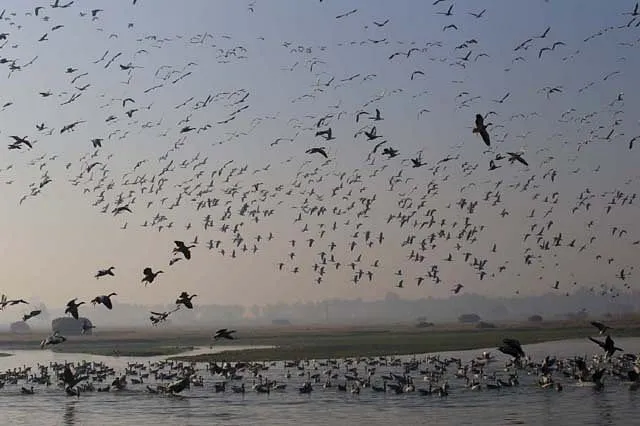Water body is defined as “any natural or artificial pond, lake, stream, river, wetland that contains permanent semi-permanent or intermittent standing or flowing waters”
Two third of earth is water but only 2.53% is fresh water and rest is salt water. Therefore, great importance has been attributed to the fresh water in social and cultural sphere since ancient times. World realizes that without adequate and clean supply of water, life activity is not sustainable. The importance of Wetlands is very important keeping in view the health and ecology of our water system but also being part of our culture and ethos.
Realizing the importance of Wetlands, the Ministry of Environment & Forests, Govt of India published Wetland Rule, 2010/2017under the aegis of EP Act 1986, which amply defines the management of Wetlands.
As per the Ramsar Convention, Wetlands have been defined as “areas of marsh, or water, whether natural or artificial, permanent or temporary, with water that is static or flowing, fresh, brackish or salt, including areas of marine water the depth of which at low tide does not exceed six meters”.
The Jammu and Kashmir is famous the world over for several of its important Wetlands, which are directly linked to the livelihood requirements of the local populations apart from their ecological, biodiversity, cultural and tourism values. Apart from being the primary habitat for hundreds of species of waterfowl, fish, mammals and insects, they receive a wide variety of migratory birds from Siberia, Northern Europe and Central Asia during the winter months, which add to the beauty. These Wetlands have been subjected to tremendous pressure on account of silt deposition, human interference like encroachments, cultivation and habitation grazing and over extraction of fodder, fuel, fish and wicker-willow etc. The management of Wetlands, therefore, has become important because many of them are being drained or encroached upon by agricultural enterprises and urban areas.
Many years back during my stint in the Environment department, an attempt was made to prepare an updated directory of lakes and water bodies using LISS III Satellite data set of 2009 along with Survey of India Topographical Maps (1967) and other secondary information available with limited field checks, revealed that an estimated 565 Lakes and Water Bodies are present in Jammu & Kashmir with 150 in Jammu, 415 in Kashmir. These lakes and Water bodies have always served as enchanting recreational areas and a major economic resource, but in recent times these water bodies have come under a vicious prolonged attack of over exploitation, environmental pollution & human interference, which lead to either disappearance or decrease in the extend of these Lakes and Water Bodies based on satellite data which needs thorough ground trothing after field visits.
While studying the present status of these Lakes and water bodies in comparison to the legacy data (Directory of Lakes and water bodies published in 1998, generated by using Survey of India Topographical so based on the findings of the above study the Lakes and water bodies of J&K have been classified as per the Wetland Rules-2010l2017, which will help in setting up regulatory mechanism for conservation and management of these lakes and water bodies.
The wetland rules 2010, envisages segregation of water bodies and wetland as per the classification given below:-
Classification of Lakes/Water Bodies of J&K as per Wetland Rules 2010.

The Department of Wildlife is managing Wetlands ,SurinsarMansar and Gharana and associated Wetlands in Jammu and Hokersar, Mirgund, Hygam and Shallabugh Wetlands in Kashmir. Hokersar (in Kashmir), andSurinsarMansar Wetlands (In Jammu) have been declared as Rasmar Sites under the Ramsar Convention.
For Wular lake, a separate authority has been constituted.
List of Wetlands

The Wildlife Protection Department of J&K is managing these Wetlands through various activities like construction of bunds to regulate water level desilting and weeding, maintenance of water pools and water channels anti-poaching/anti grazing activities, awareness and publicity programs etc.






